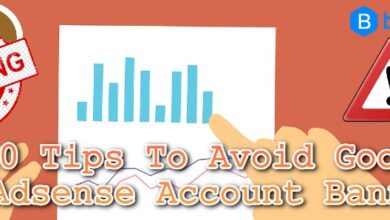Are you tired of waiting for Google AdSense approval, unsure if your website meets the eligibility criteria? 🤔 You’re not alone. Many website owners and bloggers struggle with the AdSense application process, often facing rejections without understanding why.
Imagine being able to confidently apply for AdSense, knowing your site ticks all the boxes. That’s where our pro guide comes in. We’ll walk you through the ins and outs of Google AdSense eligibility, from preparing your website to troubleshooting common issues. By the end of this guide, you’ll have a clear roadmap to AdSense approval and be one step closer to monetizing your online content.
Let’s dive into the essential aspects of AdSense eligibility, starting with understanding the basic requirements and moving on to the technical details, content guidelines, and traffic expectations. We’ll also introduce you to the AdSense Eligibility Checker – a valuable tool in your journey to approval. Ready to unlock the secrets of AdSense eligibility? Let’s get started!

Understanding Google AdSense Eligibility
A. Key requirements for AdSense approval
To successfully monetize your website with Google AdSense, you need to meet specific criteria. Here are the key requirements:
- Content Quality: Your website must have original, high-quality content that provides value to visitors.
- Website Age: Generally, your site should be at least 6 months old.
- Compliance: Adhere to Google’s policies and guidelines.
- Traffic: While there’s no official minimum, having consistent traffic is crucial.
- Design: Your site should have a clear navigation structure and professional design.
| Requirement | Description |
|---|---|
| Content | Original, valuable, and regularly updated |
| Age | Typically 6 months or older |
| Compliance | Follow Google’s policies and guidelines |
| Traffic | Consistent visitors, no specific minimum |
| Design | Professional layout with clear navigation |
Pages required for Google AdSense approval
While there is no specific requirement for the number of pages on your blog to get Google AdSense approval, having the following pages can significantly increase your chances:
Essential Pages:
- About Us: This page should provide information about your blog, its purpose, and your background. Don’t worry about how to create an About Us page, you can easily create your About Us page using Blogearn’s About Us Page Generator tool which is fully customizable.
- Contact Us: Include a clear and easy-to-find contact form or email address for visitors to reach out to you. And this can be easily created by using blogearns’ Contact Us Page Generator tool.
- Privacy Policy: This is crucial for demonstrating your commitment to user privacy and data protection. You can create your blog’s or website’s Privacy Policy page by using our Privacy Policy Generator tool.
- Terms of Service: Outline the terms and conditions under which visitors can use your blog. Terms of Services can easily be created by using our Terms of Services Page Generator tool which is absolutly free for all.
Additional Pages (Recommended):
- Disclaimer: If your blog contains any disclaimers or legal information, include a dedicated page for this. Create your fully customizable Disclaimer page using blogearns’ Disclaimer Generator tool.
- Sitemap: A sitemap helps search engines understand the structure and content of your blog. This is one of the most important pages for any blog or websites and can be created by blogearns’ Sitemap Generator tool which is absolutly free of all.
B. Importance of meeting eligibility criteria
Meeting AdSense eligibility criteria is crucial for several reasons:
- Approval Success: Fulfilling all requirements increases your chances of quick approval.
- Monetization Potential: Eligible sites are more likely to generate higher ad revenue.
- User Experience: Meeting criteria often correlates with a better user experience.
- Long-term Success: Compliance helps maintain your AdSense account in good standing.
C. Common reasons for rejection
Understanding common rejection reasons can help you avoid pitfalls:
- Insufficient Content: Websites with limited original content often face rejection.
- Policy Violations: Engaging in prohibited practices like click fraud or displaying adult content.
- Poor User Experience: Sites with excessive ads, poor navigation, or slow loading times.
- Copyright Issues: Using copyrighted material without permission.
- Misleading Content: Providing false information or clickbait.
To maximize your chances of approval, focus on creating valuable content, ensuring policy compliance, and providing an excellent user experience. Remember, meeting AdSense eligibility is not just about approval; it’s about building a sustainable platform for long-term monetization success.
Now that we’ve covered the basics of AdSense eligibility, let’s move on to preparing your website for AdSense approval.

Preparing Your Website for AdSense
Now that we understand the basics of Google AdSense eligibility, let’s dive into how to prepare your website for AdSense approval. This crucial step can significantly increase your chances of getting accepted into the program.
Ensuring mobile responsiveness
In today’s mobile-first world, having a responsive website is not just a luxury—it’s a necessity. Google places a high value on mobile-friendly sites, making this a critical factor in AdSense approval.
To ensure your site is mobile-responsive:
- Use a responsive design theme or template
- Test your site on various devices and screen sizes
- Optimize images and media for mobile viewing
- Implement mobile-friendly navigation
Implementing proper site navigation
A well-organized website with clear navigation is essential for both user experience and AdSense approval. Here’s how to improve your site’s navigation:
- Create a logical menu structure
- Use breadcrumbs for easy backtracking
- Implement a search function
- Include a sitemap
Improving website design and user experience
A visually appealing and user-friendly website design can significantly impact your AdSense application. Consider the following aspects:
| Design Element | Importance | Tips for Improvement |
|---|---|---|
| Color scheme | High | Use complementary colors, ensure readability |
| Typography | Medium | Choose legible fonts, use appropriate sizes |
| Layout | High | Implement a clean, uncluttered design |
| Loading speed | Critical | Optimize images, minimize plugins, use caching |
Creating high-quality, original content
Content is king when it comes to AdSense approval. Focus on creating valuable, original content that engages your audience and adheres to AdSense content guidelines:
- Develop a content strategy aligned with your niche
- Write in-depth, informative articles
- Use proper formatting (headings, paragraphs, lists)
- Include relevant images and multimedia
- Regularly update your content to keep it fresh
By implementing these improvements, you’ll not only increase your chances of AdSense approval but also create a better overall experience for your visitors. With your website properly prepared, we can now move on to exploring the technical aspects of AdSense eligibility.

Technical Aspects of AdSense Eligibility
Now that we’ve covered the basics of preparing your website for AdSense, let’s dive into the technical aspects that can make or break your eligibility. These technical requirements are crucial for ensuring your website meets Google’s standards and increases your chances of AdSense approval.
Ensuring proper HTML structure
A well-structured HTML is essential for AdSense eligibility. Google’s crawlers need to easily navigate and understand your website’s content. Here are some key points to consider:
- Use semantic HTML5 tags (e.g., <header>, <nav>, <article>, <section>)
- Implement a clear hierarchy with proper heading tags (H1, H2, H3, etc.)
- Ensure all tags are properly closed and nested
- Use valid HTML code (you can check using W3C Validator)
Checking site loading speed
Site speed is crucial for both user experience and AdSense eligibility. A slow-loading website can negatively impact your chances of approval. Here’s a table comparing tools to check your site speed:
| Tool | Features | Best for |
|---|---|---|
| Google PageSpeed Insights | Provides detailed suggestions | Overall performance analysis |
| GTmetrix | Offers actionable recommendations | In-depth speed optimization |
| Pingdom | User-friendly interface | Quick speed checks |
Implementing Google Analytics
Google Analytics integration is not mandatory for AdSense eligibility, but it can significantly boost your chances of approval. It demonstrates your commitment to tracking and improving your site’s performance. To implement Google Analytics:
- Sign up for a Google Analytics account
- Create a property for your website
- Add the tracking code to your site’s HTML
- Verify the installation
Setting up privacy policy and terms of service
To comply with AdSense requirements and build trust with your visitors, you need to have clear privacy policy and terms of service pages. These should include:
- How you collect and use user data
- Your use of cookies and tracking technologies
- Disclosure of third-party advertising (including AdSense)
- User rights and how they can opt-out of data collection
Verifying website ownership
Proving that you own the website is a critical step in the AdSense application process. Here are the methods to verify ownership:
- HTML file upload: Upload a specific HTML file to your web server
- HTML tag: Add a meta tag to your site’s home page
- Domain name provider: Use your domain name provider to verify ownership
- Google Analytics: If you’ve already set up Google Analytics, you can use this for verification
By addressing these technical aspects, you’ll significantly improve your website’s chances of meeting AdSense eligibility requirements. Next, we’ll explore the content guidelines that Google looks for when reviewing AdSense applications.

Content Guidelines for AdSense Approval
Now that we’ve covered the technical aspects of AdSense eligibility, let’s dive into the content guidelines that can make or break your AdSense approval. Google has strict standards for the content they allow on their AdSense network, and understanding these guidelines is crucial for success.
Avoiding Prohibited Content
Google maintains a list of prohibited content that is not allowed on websites using AdSense. It’s essential to familiarize yourself with this list to ensure your site complies. Here are some key categories of content to avoid:
- Adult or explicit material
- Violent or gory content
- Hate speech or discriminatory content
- Illegal activities or promotion of illegal goods
- Copyrighted material without proper authorization
To help you navigate these restrictions, here’s a quick reference table:
| Content Type | Allowed | Not Allowed |
|---|---|---|
| Educational content | ✅ | |
| News articles | ✅ | |
| Personal blogs | ✅ | |
| Adult content | ❌ | |
| Violent imagery | ❌ | |
| Copyrighted material | ❌ |
Diversifying Content Types
Google appreciates websites that offer a variety of content types. This diversity not only engages your audience but also demonstrates the depth of your site. Consider incorporating:
- Text-based articles
- Images and infographics
- Videos (if relevant to your niche)
- Interactive elements like quizzes or polls
Maintaining Consistent Posting Schedule
Consistency is key when it comes to content creation. Google values websites that regularly update their content, as it shows active management and relevance. Here are some tips for maintaining a consistent posting schedule:
- Create a content calendar
- Set realistic goals for content production
- Use scheduling tools to plan your posts in advance
- Consider outsourcing some content creation if needed
Adhering to AdSense Program Policies
Beyond avoiding prohibited content, it’s crucial to adhere to all AdSense program policies. These policies cover a wide range of topics, including:
- Ad placement and formatting
- Click fraud and invalid clicks
- Site navigation and user experience
- Transparency about sponsored content
Familiarize yourself with these policies and regularly review your site to ensure compliance. This proactive approach can help prevent issues during the AdSense application process and maintain your account in good standing once approved.
By following these content guidelines, you’ll significantly improve your chances of AdSense approval. Remember, quality content that provides value to your audience is not just good for AdSense – it’s the foundation of a successful website. In the next section, we’ll explore the traffic requirements for AdSense, another crucial factor in your eligibility.

Traffic Requirements for AdSense
Now that we’ve covered content guidelines, let’s explore the traffic requirements for AdSense approval. While Google doesn’t publicly disclose specific traffic thresholds, there are certain strategies and considerations to keep in mind when aiming to meet AdSense’s traffic expectations.
Strategies to increase organic traffic
Increasing organic traffic is crucial for AdSense approval and long-term success. Here are some effective strategies:
- Search Engine Optimization (SEO)
- Content Marketing
- Social Media Promotion
- Guest Posting
- Email Marketing
| Strategy | Description | Benefit |
|---|---|---|
| SEO | Optimize your website for search engines | Improves visibility in search results |
| Content Marketing | Create valuable, shareable content | Attracts and retains audience |
| Social Media Promotion | Share content on social platforms | Increases reach and engagement |
| Guest Posting | Write articles for other websites | Builds backlinks and expands audience |
| Email Marketing | Send newsletters to subscribers | Drives repeat traffic and loyalty |
Analyzing traffic sources and quality
Understanding your traffic sources and quality is essential for AdSense approval. Google values high-quality, organic traffic over artificial or low-quality sources.
- Use Google Analytics to track your traffic sources
- Monitor bounce rates and time on site
- Analyze user engagement metrics
- Identify and focus on your best-performing content
Understanding minimum traffic thresholds
While Google doesn’t specify exact numbers, there are some general guidelines to consider:
- Consistent traffic: Aim for steady growth rather than sudden spikes
- Unique visitors: Focus on attracting new visitors regularly
- Page views: Increase the number of pages viewed per session
- Geographical diversity: Attract visitors from various regions
Remember, quality trumps quantity. A smaller audience that engages deeply with your content is more valuable than a large number of disinterested visitors.
By implementing these strategies and focusing on high-quality, organic traffic, you’ll be better positioned to meet AdSense’s traffic requirements. As you work on increasing your traffic, it’s important to use tools that can help you assess your eligibility. In the next section, we’ll explore how to use the AdSense Eligibility Checker to evaluate your website’s readiness for the program.

Using the AdSense Eligibility Checker
Now that we’ve covered the various requirements for AdSense approval, let’s explore how to use the AdSense Eligibility Checker effectively. This tool is invaluable for publishers looking to monetize their websites through Google AdSense.
Accessing the official AdSense checker tool
To begin, you’ll need to access Google’s official AdSense Eligibility Checker. Follow these steps:
- Go to the Google AdSense website
- Look for the “Check eligibility” or “Eligibility checker” option
- Sign in with your Google account
- Enter your website URL when prompted
Interpreting checker results
Once you’ve run the checker, you’ll receive a detailed report. Here’s how to interpret the results:
| Result | Meaning | Action Required |
|---|---|---|
| Green checkmark | Meets requirements | No action needed |
| Yellow exclamation | Potential issues | Review and address concerns |
| Red X | Does not meet requirements | Significant changes needed |
The checker typically evaluates several aspects of your website:
- Content quality and originality
- Site navigation and user experience
- Adherence to AdSense policies
- Technical implementation
Addressing identified issues
If the checker identifies any issues, don’t panic. Here’s a systematic approach to address them:
- Prioritize: Focus on red X issues first, then move to yellow exclamation points.
- Analyze: Carefully read the descriptions provided for each issue.
- Research: Use Google’s AdSense help center for detailed guidance on specific problems.
- Implement: Make the necessary changes to your website.
- Re-check: Run the eligibility checker again after implementing changes.
Remember, the AdSense Eligibility Checker is a tool to guide you towards approval. It’s not a guarantee, but addressing all identified issues significantly increases your chances of success.
By using the AdSense Eligibility Checker regularly, you can ensure your website remains compliant with Google’s policies and standards. This proactive approach not only helps in gaining initial approval but also in maintaining a long-term, successful partnership with Google AdSense.
Next, we’ll explore common eligibility issues and how to troubleshoot them effectively, ensuring your website is in the best possible position for AdSense approval.

Troubleshooting Common Eligibility Issues
Now that we’ve explored how to use the AdSense Eligibility Checker, let’s address some common issues that publishers face when trying to qualify for AdSense. By understanding these challenges and their solutions, you’ll be better equipped to overcome obstacles in your AdSense journey.
Overcoming Age and Location Restrictions
AdSense has specific age and location requirements that can be stumbling blocks for some publishers:
- Age restrictions: You must be at least 18 years old to participate in AdSense. If you’re younger, consider partnering with a parent or guardian who meets the age requirement.
- Location limitations: AdSense isn’t available in all countries. If you’re in an unsupported location, explore alternative monetization methods or consider using a different Google account registered in an eligible country.
Addressing Traffic Quality Concerns
Google values high-quality traffic, and low-quality or artificial traffic can lead to eligibility issues:
- Avoid paid traffic: Focus on organic growth strategies instead of buying traffic.
- Diversify traffic sources: Don’t rely solely on social media or search engines.
- Engage your audience: Encourage comments, shares, and return visits to improve user metrics.
Resolving Technical Problems
Technical issues can hinder your AdSense eligibility. Here’s how to address common problems:
| Technical Issue | Solution |
|---|---|
| Missing robots.txt file | Create a robots.txt file in your root directory |
| Incomplete site verification | Verify your site ownership through Google Search Console |
| Broken links | Regularly audit and fix broken links on your website |
| Slow loading times | Optimize images, use caching, and consider a CDN |
Fixing Content Policy Violations
Adhering to AdSense content guidelines is crucial. Here are steps to resolve common violations:
- Remove prohibited content: Ensure your site doesn’t contain adult, violent, or copyrighted material.
- Improve content quality:
- Write original, valuable content
- Avoid excessive ads or empty pages
- Maintain a good content-to-ad ratio
- Enhance user experience:
- Make navigation easy and intuitive
- Ensure content is accessible on all devices
- Address language issues:
- Use proper grammar and spelling
- Provide translations if your site is multilingual
By systematically addressing these common eligibility issues, you’ll significantly improve your chances of AdSense approval. Remember, persistence and continuous improvement are key in the journey to successful website monetization through AdSense.
Conclusion

Navigating Google AdSense eligibility can be a complex process, but with the right knowledge and preparation, you can significantly increase your chances of approval. By focusing on key areas such as website optimization, high-quality content creation, and adherence to AdSense guidelines, you’ll be well-positioned to pass the eligibility check.
Remember, the AdSense eligibility checker is a valuable tool in your journey towards monetization. Use it to identify and address any potential issues before submitting your application. If you encounter setbacks, don’t be discouraged. Instead, view them as opportunities to improve your website and content strategy. With persistence and attention to detail, you’ll be on your way to successfully monetizing your online presence through Google AdSense.





Your article helped me a lot, is there any more related content? Thanks!